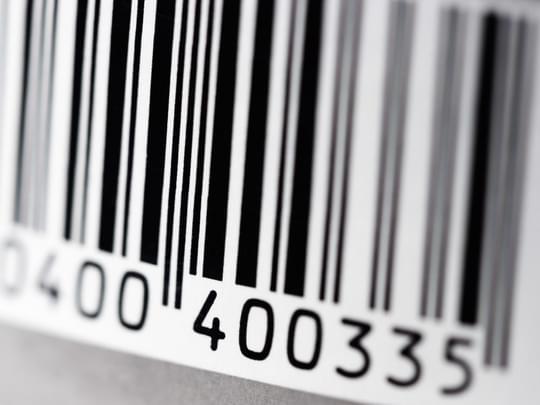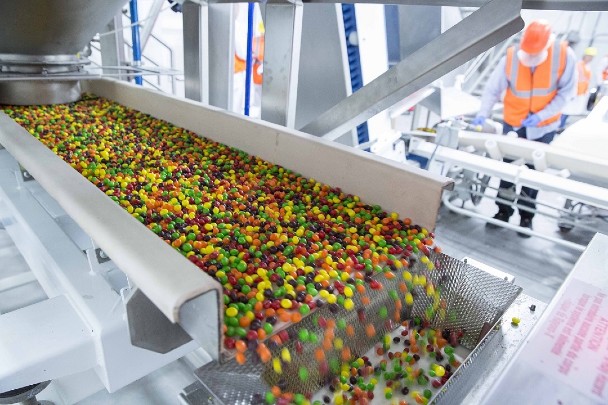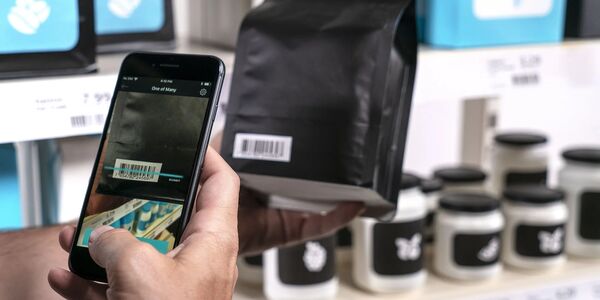March 20, 2024 Industry news
On 26 June 1974, at a Marsh Supermarket in Troy, Ohio (USA), cashier Sharon Buchanan scanned the world’s very first GS1 barcode on a pack of Wrigley’s Juicy Fruit gum.
Half a century later, Mars Wrigley - the world’s leading manufacturer of chocolate, chewing gum, mints and fruity confections - is still harnessing the power of GS1 standards.
Ever since that very first beep at the till, Mars Wrigley have been using GS1 standards to improve efficiency, enhance traceability and product safety, enable greater collaboration and communication across their supply chains, and optimise their overall operations.
By implementing these practices, Mars Wrigley have strengthened their brand reputation, delivering consistently high-quality products to consumers while simultaneously ensuring responsible practices throughout their supply chain.
None of this would have been possible without trusted data and, for data to be trusted, it needs to be accurate. That is why in the mid-2000s, Mars Wrigley launched a global data synchronisation and verification initiative that has since allowed them to adopt a more purposeful, proactive and federated approach to maintaining data quality.

The data challenge
Data quality became a top priority for Mars Wrigley when McLane Company, their largest distributor at the time, began requiring brand owners to become certified vendors.
“We weren’t certified,” explained Joyce Ann Rosenfield, Master Data Value Creation Lead at Mars Wrigley. “That impacted everything. It was affecting our speed to market. It was affecting our ability to set up and sell new items. In fact, because of the number of SKUs that we have, we realised that not being certified by McLane’s was costing us almost $2 million a year.”
Mary Wrigley needed to get certified as quickly as possible, but their first attempt failed. This was because their data simply “was not good enough” as, back then, maintaining data quality had not been embedded across the organisation’s processes. “I knew we couldn’t succeed until data became part of our way of doing business” Rosenfield said.
The scale of the problem
At that time, Mars Wrigley’s business, along with the number of items in their data management framework, was growing rapidly.
Rosenfield and her team had to spend a full year auditing and tracking the company’s product data in multiple ways to build a case based on facts.
After painstakingly mapping errors and discrepancies, they came away with one, simple but powerful message that immediately grabbed everyone’s attention; “we are wrong more often than we are right.”
“I’m not proud to say it, but our product data was only about 46 per cent accurate then,” said Rosenfield. “That fact was the catalyst that enabled the company to realise that data matters.”

Changing the culture
Rosenfield and her team knew that they needed to trigger a fundamental shift in their data culture and, to do this, they needed to secure buy-in across the organisation.
They began by educating colleagues on the role and importance of data through a robust training programme. Supported by GS1 US, they ran training sessions on Global Trade Item Number (GTIN) allocation and packaging measurement rules. These sessions were adapted to the real-world job responsibilities of each trainee, ensuring that staff not only understood why these rules were important, but also how they could benefit from deploying standards properly.
These discussions helped identify a major source of error and discrepancies: Mars Wrigley was logging packaging measurements in their Systems, Applications & Products (SAP) databases in an order and orientation that did not match orientation rules for GTIN allocation. Equipped with this knowledge, they were able to get the wider business on board with using GS1’s standardised rules for expressing packaging dimensions. This standardised approach has since extended far beyond their SAP system. It is now used for fact sheets, data sync operations and more to ensure consistency and interoperability.
Verified by GS1
By the mid-2020, the Mars Wrigley data sync team were ready to publish product data to Verified by GS1.
Verified by GS1 is a global solution that enables retailers and marketplaces to verify the identity of a product by querying the GS1 registry platform. This builds trust between retailers, brand owners and consumers leading to more sales, fewer returns and less counterfeit products. The ultimate benefit is greater efficiency because information in retailer catalogues is based on correct product identity.
Each product verified by GS1 has the product’s GTIN, brand name, description, GS1 Global Product Category (GPC) code, the item’s net content with the unit of measure, the country of sale and the URL of a product image.
“When we looked at the seven attributes that are part of Verified by GS1,” Rosenfield said, “I thought, ‘Well, this will be easy for us. We’ll push our product data into Verified by GS1, and everything will be fine.’ But it turned out to be a bit more nuanced than that. Verified by GS1 provides a real consistency check!”

Benefits realised
Since launching Verified by GS1, Mars Wrigley have been able to identify and correct over 250,000 required changes to their data, some of which had previously been considered impossible to address.
This has been achieved thanks to strict governance, a robust validation and sign-off process, and a commitment to maintaining the highest data quality standards. For example, the team soon spotted multiple name variations in their databases for one of their most iconic products; M&M’s.
“Until we went live in Verified by GS1, we didn’t realise that our own product data had it spelt in all capitals, in all lowercase, with an apostrophe, without an apostrophe … it was a real aha moment to discover that we, ourselves, had let so many different iterations of this major brand name slip into our systems” said Rosenthal.
A similar issue concerning product images was also identified. “We had the same image for multiple products. These were obviously mistakes—but mistakes we would not have been able to catch so quickly and easily without Verified by GS1.”
Impressive results
Mars Wrigley is sent a monthly report from GS1 US: a scorecard of their Verified by GS1 status with an overview of the accuracy rates for their products, what percentage of each of the seven attributes is complete and validated, and a listing of what has failed.
“As of September 2022, we are at 100 per cent accuracy on six of the attributes and 90 to 95 per cent for the images— which we tolerate because, for new listings, product packaging imagery comes later in the process” Rosenthal explained.
This has helped Mars Wrigley maintain a strong brand reputation by ensuring consistency in how their products show up in physical store listings and digital marketplaces.

Building on success
Data now plays a key role in Mars Wrigley’s commitment to adopting more sustainable practices. For example, the supply chain transparency it enables prevent the overfilling or underfilling of delivery trucks. This prevents delays, logjams and underfilling, reducing “empty miles” which in turn reduces the organisations carbon footprint.
Data quality is embedded in the company’s ways of working, with Verified by GS1 putting “quality in” at the beginning, followed by a series of comprehensive checks and balances along the entire product lifecycle.
If something does get missed, if there’s an error, a change, Verified by GS1 brings it to the company’s attention, and it is corrected as soon as possible.
It is through this approach that Mars Wrigley has been able to increase the accuracy of their product data by 54 per cent, unlocking over $300 million of value creation between 2018 and 2022.
“Our business is building a strong master data organisation,” Rosenfield concluded, “but the master data organisation can only be as good as the quality of the data. Because without quality data, you can’t run a quality business.”



